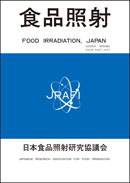Volume 35, Issue 1-2
Displaying 1-6 of 6 articles from this issue
- |<
- <
- 1
- >
- >|
-
2000 Volume 35 Issue 1-2 Pages 1-6
Published: September 30, 2000
Released on J-STAGE: June 28, 2010
Download PDF (556K) -
2000 Volume 35 Issue 1-2 Pages 7-14
Published: September 30, 2000
Released on J-STAGE: June 28, 2010
Download PDF (818K) -
2000 Volume 35 Issue 1-2 Pages 15-22
Published: September 30, 2000
Released on J-STAGE: June 28, 2010
Download PDF (701K) -
2000 Volume 35 Issue 1-2 Pages 23-34
Published: September 30, 2000
Released on J-STAGE: June 28, 2010
Download PDF (1064K) -
2000 Volume 35 Issue 1-2 Pages 65-72
Published: September 30, 2000
Released on J-STAGE: June 28, 2010
Download PDF (913K) -
2000 Volume 35 Issue 1-2 Pages 73-76
Published: September 30, 2000
Released on J-STAGE: June 28, 2010
Download PDF (572K)
- |<
- <
- 1
- >
- >|
